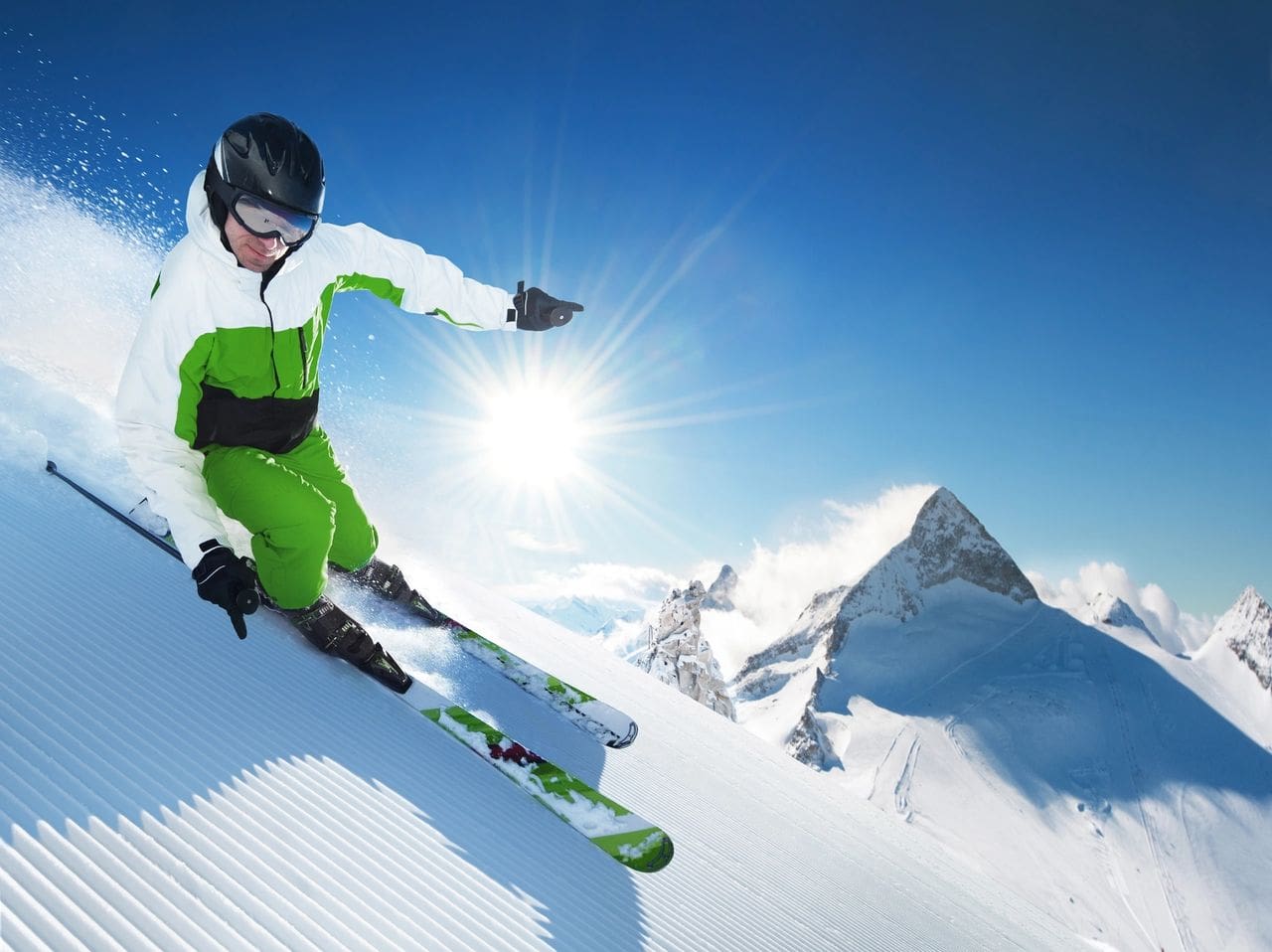
Prepare for your Ski Trip with this Exercise Routine
Ski season is upon us! Skiing is such a fun and invigorating sport and a great way to see some beautiful mountain views. Unfortunately, there is some inherent risk with this activity. Some of the most common ski injuries we see are knee ligament sprains and tears, back muscle strains, wrist sprains, and tibial fractures. Although it’s not possible to ever fully prevent injury, the right preparation can go a long way in reducing the risk of injury and making your time on the slopes that much more enjoyable!
Areas of Focus:
1. Strength and endurance through the all the core and leg muscles, with an emphasis on the quads
2. Single leg strength, balance and control
3. Plyometrics
Exercises:
1. Wall sit
This exercise will allow you to build endurance in the quad muscles which are essential for knee stability and control. This exercise will help your quads to not get too tired on those long runs with lots of turns.
-Sit, leaning against the wall to a depth that is challenging to you, working towards getting your hips and knees bent to 90 degrees
-Start with a 30 second hold and work up to 2 minutes
-Make it harder by performing the single leg version
2. Single leg step down
The step down challenges eccentric control of the quad muscles which is important for shock absorption. This exercise also challenges balance and ankle mobility. Single leg exercises are always a good way to isolate one leg at a time so that you can make sure each leg is getting strengthened symmetrically versus letting the stronger leg take over which is common in double leg exercises.
-Start standing on a step
-Execute this exercise by *slowly* tapping your heel down to the floor to emphasize the eccentric control of the quad
-Think about sitting your hips back to hinge through the hip
-Try 2 sets of 10 reps on each side and add weight if you are able!
3. Squat
This exercise will help you build strength in all the major muscle groups in your legs, including the glutes, quads, hamstrings, and calves as well as your core. See our blog on the squat for technique, different ideas and variations to emphasize different muscle groups, challenge endurance vs. strength vs. power etc.
-Began standing with your feet a comfortable width apart, shoulder width or a little further
-Keep a neutral spine and chest up as you sit the hips back in a controlled manner then return to upright
-Try 2 sets of 10 reps, once you have the form down add some weight
4. Skaters
This is a plyometric exercise that will help develop power in your leg muscles! This is what you need to leverage your strength quickly, for example, when you need to make a sharp turn while you are going fast on steep terrain. This exercise will also challenge single leg stability and balance which are also important for reacting to bumps and icy patches without falling. With any plyometric drill, a little goes a long way. When starting out, you may incorporate something like this once a week so you’ve got lots of time for the tissue to recover.
-Jump laterally from one leg to the other
-Land with a soft landing sinking into your hip and knee
-As you get more comfortable, work on becoming more explosive and traveling a further distance side to side
-Try 15 reps on each side
5. Plank
Skiing is a full body exercise and your legs are only going to be as strong and stable as your core! Although your core should be engaged in all of these exercises, a plank is a bit more targeted. A plank is also a great way to build endurance which you will need for long runs and long days on the slopes
-Begin on your stomach with your elbows bent and forearms in contact with the floor
-Plank up onto your forearms and feet, using your core to keep your trunk flat like a board
-Hold for 30 seconds working up to 1 minute
-To add a challenge, kick one leg up at a time, this will also give you an extra challenge through the quad on the side that is down
Other Considerations: Skiing at high altitude is tough on the cardiovascular system. No matter how in shape you are, you will feel it especially the first day as your body is acclimating to the change. Still, the more cardiovascular fitness you have going in to your trip the better! You can train this up with swimming, biking, stair stepper, running, etc.
Contact Us:
If you have any nagging injuries or deficits that you want to address before your next ski trip or any other questions regarding form and injury prevention, physical therapy can help. Please contact the experienced physical therapists at Dynamic Physical Therapy – Chicago and Follow and Like us on Instagram and Facebook. Also, subscribe to our You Tube Channel for the above exercises and many more!
Please call (312) 643-1555 or email info@dynamic-PT.com with any questions or to schedule your consultation today.
